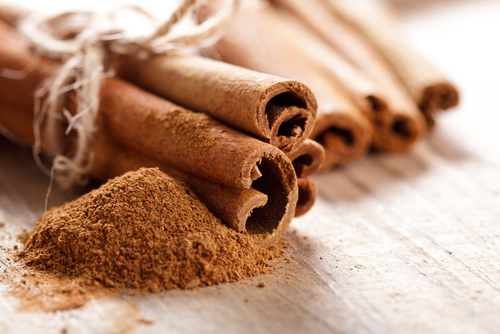You would never imagine that a spice normally associated with treacly sweet pastries slathered in frosting could be a major key to controlling blood sugars and deterring insulin resistance, but numerous studies have shown cinnamon’s natural insulin mimicking attributes and glycemic control.
Cinnamon’s History
Before we get into how cinnamon is being used in modern times, let’s take a quick historical look at this versatile spice. Its history dates back to around 2800 BC and has been used by Egyptians, Romans and the Chinese as medicine for colds and flues as well as digestive disorders.
Cinnamon is even mentioned in the Bible when Moses used it as an ingredient in his anointing oils. Romans burned cinnamon during funerals, most likely as a way to keep away the odor of dead bodies, and the ancient Egyptians used it to as a preservative to embalm mummies.
It is also documented that the ancients used cinnamon as an eye remedy, anti-inflammatory and to relieve kidney and urinary tract issues. In Ayurvedic medicine cinnamon oil is used externally for rheumatism and stiff, aching joints and can be used in inhalers for respiratory ailments.
Modern Research Finds a New Use
With cinnamon’s robust ancient history as a natural health remedy, is it any wonder that it can be used as a natural way to regulate blood sugar and manage your diabetes? That’s what recent research is pointing to.
In 2012, the University of West London tested the efficacy of cinnamon intake on diabetes-2 glucose levels by conducting a meta-analysis of 6 carefully searched clinical trials. These trials included a total of 435 diabetic patients whose glucose levels were taken from 40 days to four months after consuming cinnamon supplements every day. Dosages varied between patients from one to six grams of cinnamon daily.
Researchers employed two different forms of testing for their trials, both the fasting plasma glucose (FPG) testing and the HbA1c testing, which identifies how much glucose became stuck to blood cells. These two tests formed an overall three month blood sugar average.
What they found was that cinnamon had a profound impact on the patients’ mean glucose levels. This shouldn’t have come as a big surprise to the research team, because a previous trial was conducted in 2009 at the UK’s Thames Valley University that showed very similar results. Team members of that trial concluded:
“Whilst definitive conclusions cannot be drawn regarding the use of cinnamon as an antidiabetic therapy, it does possess antihyperglycaemic properties … Further research is required to … to assess the potential to reduce pathogenic diabetic complications with cinnamon supplementation.”
Similar Findings in American Trials
Similar trials were conducted in 2009 at Baylor University in Waco, Texas. The research team studied the effects of acute sleep loss that is common in people with insulin resistance and type 2 diabetes.
Their findings concluded that cinnamon supplementation “facilitates glucose disposal in healthy humans.” Cinnamon has the ability to mechanically create increased insulin sensitivity which means glucose can naturally find its way into the muscle cells. At the end of the trial Baylor researchers concluded that because insulin resistance is mainly a consequence of reduced muscle insulin sensitivity, cinnamon extracts have the ability to reduce the effect of insulin resistance following sleep loss.
What’s the best Way to Take Cinnamon for Diabetes?
If you are a diabetic, there’s no real right or wrong way to start incorporating cinnamon into your daily life, it has more to do with your lifestyle and preferences. For instance, if you are not someone that cooks often, you may find your best bet is to speak with your doctor about taking a daily cinnamon supplement. Be sure to check with them about any potential negative interactions with your other medications.
If you do cook and bake you may find it’s very easy to start replacing sugar with cinnamon in your recipes. This is a win – win for diabetics who should be cutting out as much sugar in their diet as possible. You’ll find this versatile spice pairs well with savory meat and vegetable dishes, and can also be used in canning fruits and vegetables – if you do that sort of thing.
It’s not so much how you incorporate cinnamon into your daily life but just that you do.
Cinnamon is a delicious way to manage your diabetes, but wouldn’t it be great if some day there was a 100% natural protocol that could completely reverse the root cause of your blood sugar imbalance?
One medical expert says this is not only possible, but that patients can do it without needing to take any potentially harmful medications.
Sound too good to be true?
In the free video on the very next page, she shares the details of this diabetes-reversing method and how you can learn a few simple tweaks to what you eat and how you move that can engineer a metabolic reboot so you can maintain healthy blood sugar levels for the rest of your life.
She even shares one specific step you can try immediately to help you get control of your diabetes today.
If you’d like to learn the strategies and tools to fix your blood sugar system without relying on drugs watch the video now.
 Validating...
Validating... 





Leave a Reply